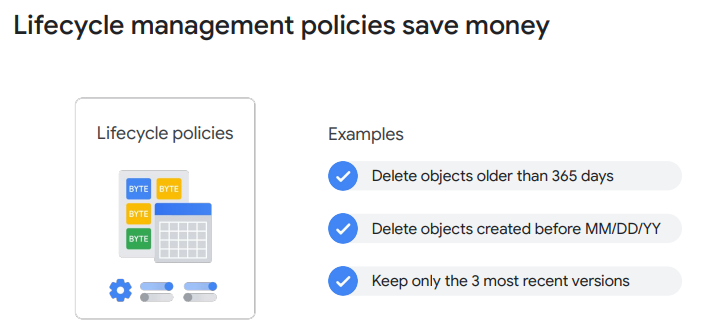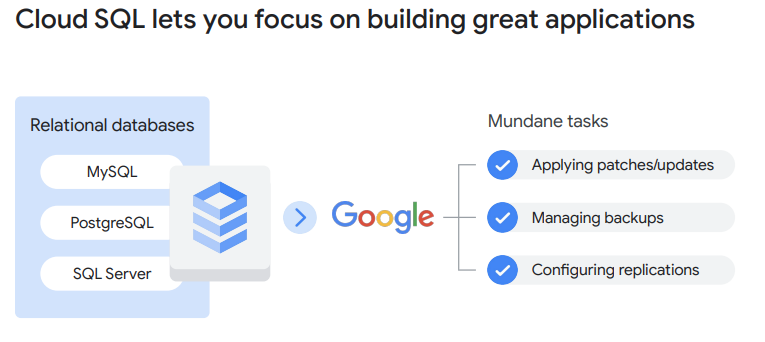Every application needs to store data - for example, media to be streamed or perhaps
even sensor data from devices - and different applications and workloads require
different storage database solutions.
Google Cloud has storage options for structured, unstructured, transactional, and
relational data.
Google Cloud has storage options for structured, unstructured, transactional, and
relational data
Google Cloud’s five core storage products:
Cloud Storage,
Bigtable,
Cloud SQL,
Spanner,
Firestore.
Depending on your application, you might
use one or several of these services to do the job.
Cloud Storage’s primary use is whenever binary large-object storage (also known as a
“BLOB”) is needed for online content such as videos and photos, for backup and
archived data, and for storage of intermediate results in processing workflows.
Cloud Storage files are organized into buckets. A bucket needs a globally-unique
name and a specific geographic location for where it should be stored, and an ideal
location for a bucket is where latency is minimized. For example, if most of your users
are in Europe, you probably want to pick a European location so either a specific
Google Cloud region in Europe, or else the EU multi-region.
The storage objects offered by Cloud Storage are “immutable,” which means that you
do not edit them, but instead a new version is created with every change made.
Administrators have the option to either allow each new version to completely
overwrite the older one, or to keep track of each change made to a particular object by
enabling “versioning” within a bucket. If you choose to use versioning, Cloud Storage
will keep a detailed history of modifications -- that is, overwrites or deletes -- of all
objects contained in that bucket.
In many cases, personally identifiable information may be contained in data objects,
so controlling access to stored data is essential to ensuring security and privacy are
maintained. Using IAM roles and, where needed, access control lists (ACLs),
companies can conform to security best practices, which require each user have
access and permissions to only what they need to do their jobs, but no more than
that.
There are a couple of options to control user access to objects and buckets : 1. For most purposes, IAM is sufficient. Roles are inherited from project to
bucket to object.
2. If you need finer control, you can create access control lists. Each access
control list consists of two pieces of information. The first is a scope, which
defines who can access and perform an action. This can be a specific user or
group of users. The second is a permission, which defines what actions can
be performed, like read or write.
There are four primary storage classes in Cloud Storage and stored data is managed
and billed according to which “class” it belongs:
1. The first is Standard Storage. Standard Storage is considered best for
frequently accessed, or “hot,” data. It’s also great for data that is stored for
only brief periods of time.
2. The second storage class is Nearline Storage. This is best for storing
infrequently accessed data, like reading or modifying data once per month or
less, on average. Examples might include data backups, long-tail multimedia
content, or data archiving.
3. The third storage class is Coldline Storage. This is also a low-cost option for
storing infrequently accessed data. However, as compared to Nearline
Storage, Coldline Storage is meant for reading or modifying data, at most,
once every 90 days.
4. The fourth storage class is Archive Storage. This is the lowest-cost option,
used ideally for data archiving, online backup, and disaster recovery. It’s the
best choice for data that you plan to access less than once a year, because it
has higher costs for data access and operations and a 365-day minimum
storage duration.
Cloud Storage also provides a feature called Autoclass, which automatically
transitions objects to appropriate storage classes based on each object's access
pattern.
The feature moves data that is not accessed to colder storage classes to reduce
storage cost and moves data that is accessed to Standard storage to optimize future
accesses.
Autoclass simplifies and automates cost saving for your Cloud Storage data.














No comments:
Post a Comment